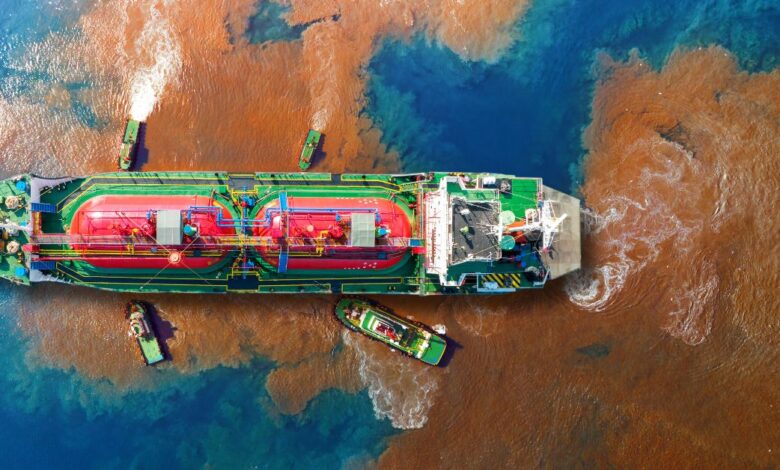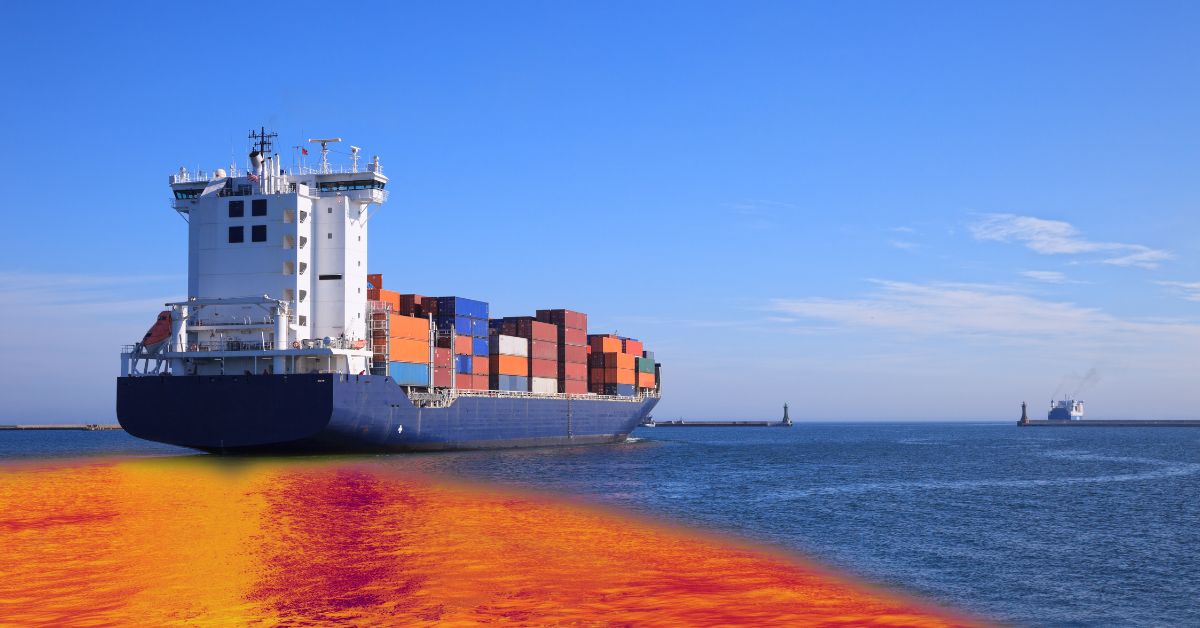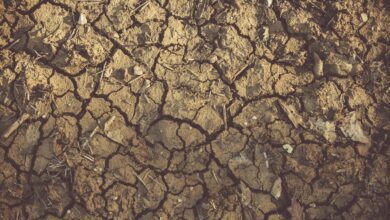The Impact of Oil Spills: Examining the Environmental Consequences and Solutions

As the global demand for energy continues to rise, the risk of oil spills remains a pressing issue that requires immediate attention. Understanding the far-reaching environmental consequences of these events and exploring effective solutions is crucial for safeguarding the natural world and its precious resources.
Environmental Consequences of Oil Spills
The environmental impact of oil spills can be far-reaching and long-lasting. The extent of the damage depends on various factors, such as the volume of the spill, the type of oil, the location, and the environmental conditions at the time of the incident.
Effects on Marine Life
One of the most devastating consequences of oil spills is the impact on marine ecosystems. Oil can have a devastating effect on a wide range of marine organisms, from plankton and small invertebrates to larger animals like fish, seabirds, and mammals. Oil can coat the feathers or fur of these creatures, leading to hypothermia, drowning, and suffocation. Additionally, the toxic chemicals in the oil can be ingested or absorbed through the skin, causing internal damage and even death.
Impact on Coastal Ecosystems
Coastal ecosystems, such as wetlands, mangroves, and beaches, are particularly vulnerable to the effects of oil spills. The oil can smother and suffocate delicate plants and animals, disrupting the entire food chain. The contamination of these vital habitats can have long-lasting effects, as it can take years or even decades for the ecosystem to fully recover.
Long-Term Effects of Oil Spills on the Environment
The environmental consequences of oil spills can persist for many years, even decades, after the initial incident. The oil can become trapped in sediments, where it can continue to leach out and contaminate the surrounding area. This can lead to ongoing harm to wildlife and the disruption of natural processes, such as the cycling of nutrients and the functioning of the ecosystem as a whole.
Also read: The Dirty Truth You Need to Know About Fossil Fuels
Case Studies: Major Oil Spills and Their Environmental Impact
Throughout history, there have been numerous devastating oil spills that have had far-reaching environmental consequences. Some of the most notable examples include:
- Exxon Valdez Oil Spill (1989): In 1989, the Exxon Valdez oil tanker ran aground in Alaska’s Prince William Sound, spilling an estimated 11 million gallons of crude oil. The spill devastated the local ecosystem, killing thousands of seabirds, sea otters, and other marine life. The long-term effects of the spill are still being felt in the region today.
- Deepwater Horizon Oil Spill (2010): In 2010, the Deepwater Horizon oil rig explosion in the Gulf of Mexico resulted in the largest marine oil spill in history, with an estimated 134 million gallons of oil released into the ocean. The spill had a catastrophic impact on marine life, coastal ecosystems, and the livelihoods of local communities.
- Gulf War Oil Spill (1991): During the Gulf War, Iraqi forces deliberately released an estimated 240-336 million gallons of crude oil into the Persian Gulf, creating one of the largest oil spills in history. The environmental damage was extensive, with widespread contamination of coastal habitats and the deaths of countless marine organisms.
These case studies highlight the severe and long-lasting consequences of oil spills, underscoring the urgent need for effective prevention and response measures.
Oil Spill Response and Cleanup Techniques

When an oil spill occurs, a range of response and cleanup techniques are employed to mitigate the environmental damage. These methods include:
- Containment and Booms: Floating barriers, known as booms, are used to contain the spill and prevent the oil from spreading further.
- Skimming and Vacuuming: Specialized vessels and equipment are used to physically remove the oil from the water’s surface.
- Dispersants: Chemical dispersants are applied to the oil slick to break it down into smaller droplets, which can then be more easily degraded by natural processes.
- In-Situ Burning: In some cases, the controlled burning of the oil on the water’s surface can be an effective cleanup method.
- Bioremediation: The use of naturally occurring microorganisms or engineered microbial agents to break down and remove the oil from the environment.
- Manual Cleanup: In coastal areas, teams of workers may be deployed to manually remove the oil from shorelines and other sensitive habitats.
The effectiveness of these techniques can vary depending on the specific circumstances of the oil spill, and a combination of methods is often required to achieve the best possible outcome.
Also read: Understanding Cap and Trade: All You Need to Know
Preventing and Minimizing the Risk of Oil Spills
Proactive measures are essential for reducing the risk of oil spills and mitigating their environmental impact. Some key strategies include:
- Improved Regulations and Enforcement: Stricter regulations governing the transportation, storage, and handling of oil, coupled with robust enforcement, can help prevent accidents and hold responsible parties accountable.
- Technological Advancements: Innovations in pipeline monitoring, tanker design, and spill detection and response technologies can enhance the safety and reliability of oil operations.
- Enhanced Preparedness and Response Planning: Comprehensive emergency response plans, regular training exercises, and the pre-positioning of cleanup equipment can improve the ability to quickly and effectively respond to oil spills.
- Promoting Environmental Stewardship: Fostering a culture of environmental responsibility within the oil industry and educating the public about the importance of preventing and mitigating oil spills can help drive positive change.
- Investment in Renewable Energy: Transitioning to more sustainable energy sources, such as renewable technologies, can reduce the overall reliance on oil and the associated risks of spills.
By implementing a multifaceted approach to oil spill prevention and response, the environmental consequences of these incidents can be significantly reduced.
International Regulations and Policies for Oil Spill Prevention and Response

In recognition of the global nature of the oil spill problem, various international organizations and agreements have been established to address the issue. These include:
- International Convention for the Prevention of Pollution from Ships (MARPOL): This convention, developed by the International Maritime Organization (IMO), sets out regulations for the prevention of pollution from ships, including requirements for oil spill response and contingency planning.
- Oil Spill Preparedness and Response Agreements: Regional and global agreements, such as the International Convention on Oil Pollution Preparedness, Response and Cooperation (OPRC), facilitate international cooperation and the sharing of resources in the event of a major oil spill.
- National and Regional Regulations: Many countries and regions have developed their own laws and regulations to prevent and respond to oil spills within their jurisdictions, often in alignment with international standards.
- Liability and Compensation Frameworks: Mechanisms like the International Oil Pollution Compensation Funds (IOPC Funds) provide a framework for holding responsible parties liable and compensating affected parties for the damages caused by oil spills.
These international frameworks and regulations play a crucial role in establishing a coordinated, global approach to addressing the environmental threats posed by oil spills.
The Importance of Proactive Measures in Preventing and Mitigating Oil Spills
The environmental consequences of oil spills can be devastating and far-reaching, with impacts that can last for decades. From the immediate harm to marine life and coastal ecosystems to the long-term disruption of natural processes, these incidents pose a grave threat to the health and well-being of our planet.
By implementing a comprehensive approach to oil spill prevention and response, which includes improved regulations, technological advancements, enhanced preparedness, and international cooperation, we can significantly reduce the risk and mitigate the environmental impact of these events. Ultimately, the key to safeguarding our natural resources lies in a proactive and collaborative effort to protect the environment from the devastating effects of oil spills.
Also read: Creating Sustainable Solutions with Circular Economy




